Top 13 Tailwind CSS Alternatives for Developers
2025-02-20 14:00:04
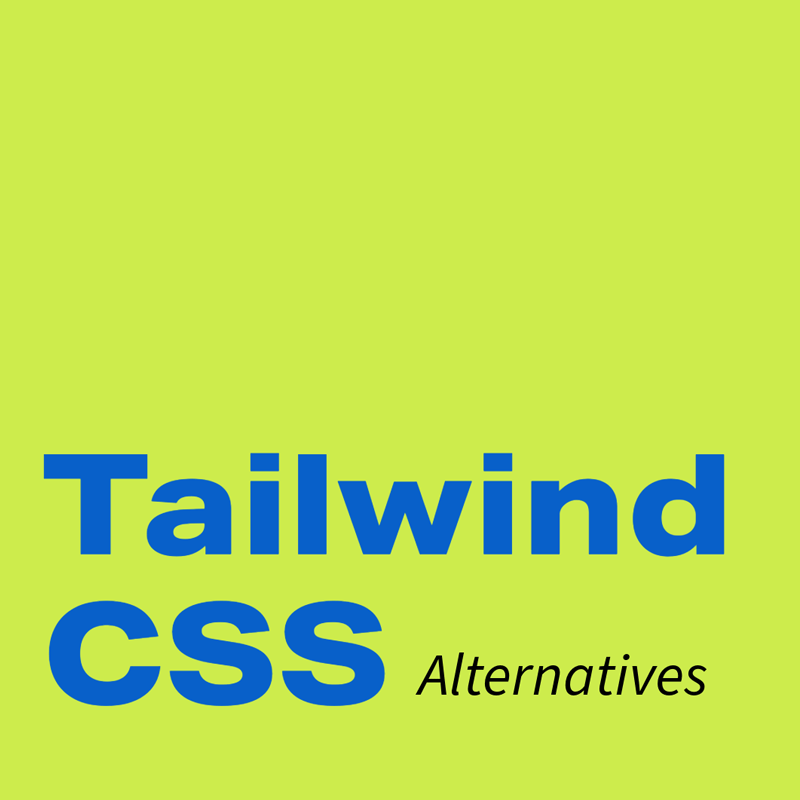
As a developer or designer, you’ve likely heard of Tailwind CSS—the utility-first framework praised for its flexibility. But what if your project demands a different approach? Whether you’re seeking simpler syntax, pre-built components, or a framework that aligns with specific design philosophies, exploring Tailwind CSS alternatives can unlock new efficiencies.
The right CSS framework isn’t a one-size-fits-all solution. Factors like project scale, team expertise, and customization needs play pivotal roles. For instance, while Tailwind’s utility classes offer granular control, frameworks like Bootstrap or Material UI provide ready-to-use components, speeding up development. Others, such as Bulma or Pure CSS, focus on minimalism, ideal for lightweight projects.
In this curated list, we’ll dissect 13 standout Tailwind alternatives, highlighting their strengths, use cases, and unique features. From robust options like Foundation to newer contenders like UnoCSS, you’ll discover frameworks that cater to diverse workflows—whether you’re building a sleek SaaS dashboard or a content-heavy website. Let’s dive in.
Bootstrap
Bootstrap remains a titan among CSS frameworks, trusted by millions for its responsive grid system and extensive component library. Unlike Tailwind’s utility-first approach, Bootstrap offers pre-designed buttons, modals, and navigation bars, making it ideal for developers who prioritize speed over customization. Its Flexbox-based grid ensures consistent layouts across devices, while SASS support allows deeper theming.
For designers, Bootstrap’s documentation is a goldmine, with clear examples and community-driven templates. While it’s heavier than Tailwind, its widespread adoption means seamless integration with React, Angular, and other libraries. If you need a battle-tested framework with minimal setup, Bootstrap is a top Tailwind CSS alternative.
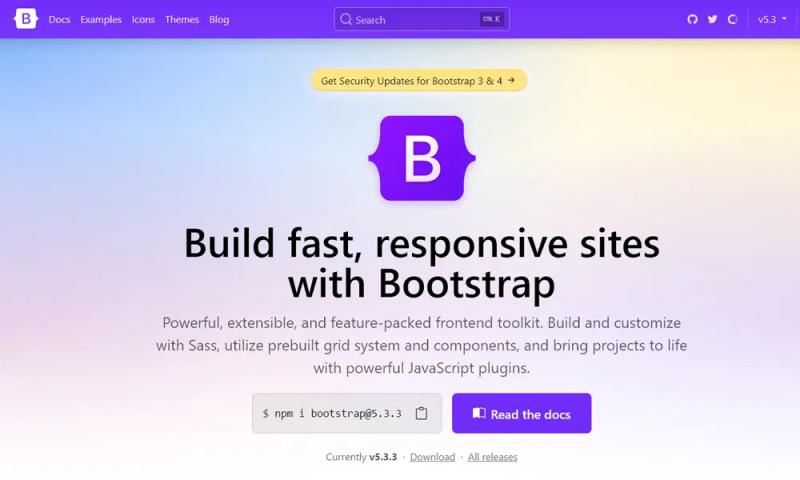
Semantic UI
Semantic UI emphasizes human-friendly HTML, using intuitive class names like “ui button” instead of abstract utilities. This framework focuses on readability, making code easier to maintain for teams. Its theming system lets you tweak variables globally, and the component library includes everything from loaders to dynamic dropdowns.
While not as lightweight as Tailwind, Semantic UI shines in projects where clarity and consistency matter—think enterprise apps or collaborative environments. The community-driven ecosystem also offers third-party themes, reducing design bottlenecks. For developers tired of deciphering utility classes, this CSS framework offers a refreshing, semantic approach.
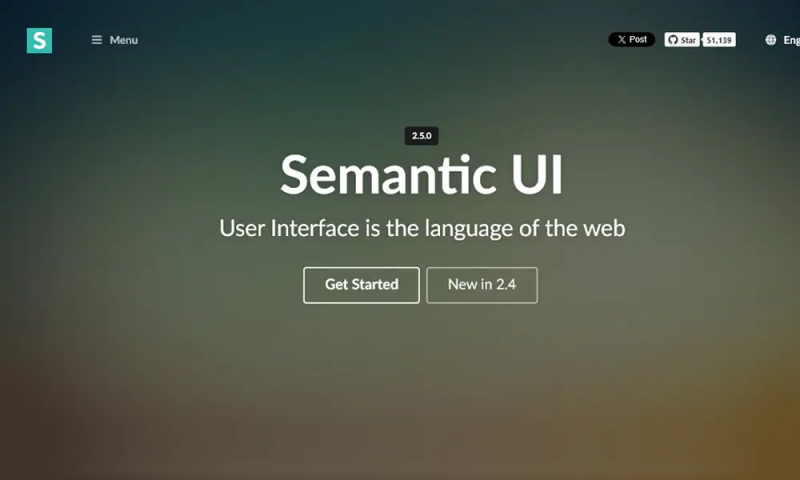
Material UI
Material UI (MUI) brings Google’s Material Design to React, offering polished components like cards, dialogs, and data tables. It’s a strong Tailwind alternative for teams building modern web apps with a focus on aesthetics. The framework provides theme customization via JavaScript objects, aligning with React’s component-driven architecture.
While Tailwind requires styling from scratch, MUI delivers production-ready elements with built-in accessibility. Its popularity ensures robust community support and frequent updates. However, bundle size can be a concern for performance-critical projects. If Material Design aligns with your brand, MUI is a time-saving pick.
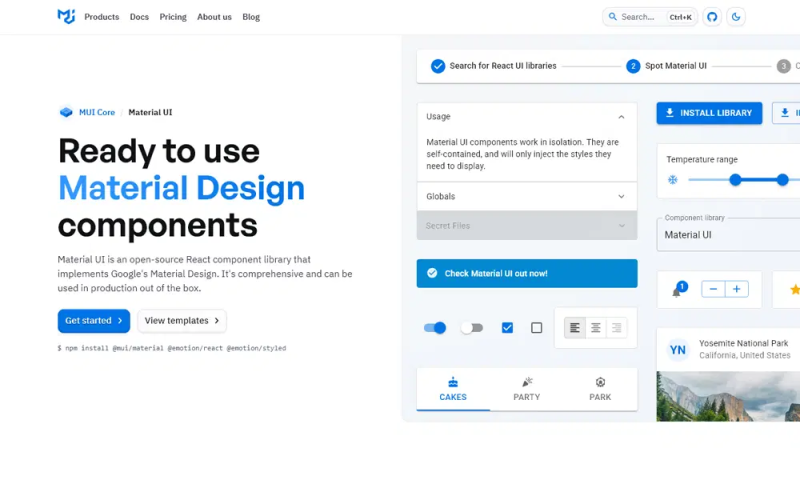
Bulma
Bulma is a lightweight, Flexbox-based framework that prioritizes simplicity. With no JavaScript included, it’s perfect for developers who want full control over interactivity. Bulma’s modular structure lets you import only the components you need, keeping stylesheets lean—a stark contrast to Tailwind’s generated utility classes.
The syntax is straightforward, using human-readable class names like “is-primary” or “has-shadow.” While it lacks pre-built templates, Bulma’s documentation includes code snippets for common layouts. For small to medium projects where minimalism matters, this Tailwind CSS alternative strikes a balance between flexibility and ease.
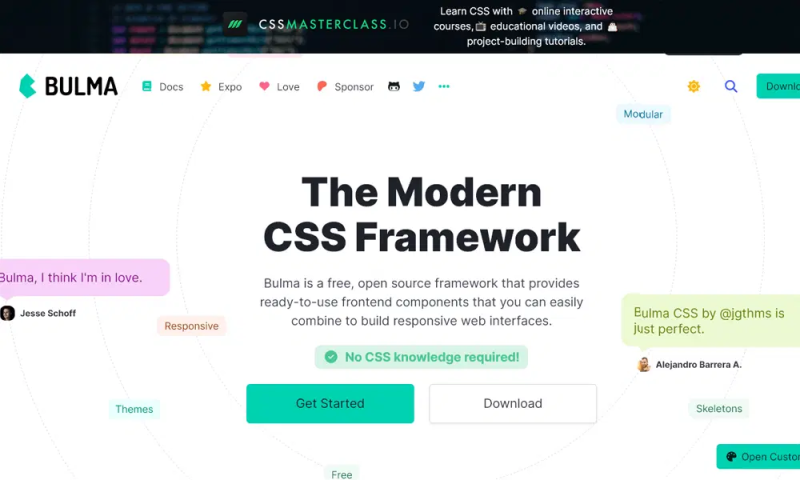
Foundation
Foundation by ZURB is a responsive front-end framework geared toward complex, custom projects. It offers a semantic grid system, accessibility features, and UI components like off-canvas menus. Unlike Tailwind’s utility-first methodology, Foundation provides a structured starting point for large-scale applications.
Designers appreciate its mobile-first approach and SASS mixins, which simplify creating breakpoints. The learning curve is steeper than Tailwind, but the payoff is a highly adaptable framework. If you’re building a corporate site or SaaS platform, Foundation’s CSS framework is worth exploring.
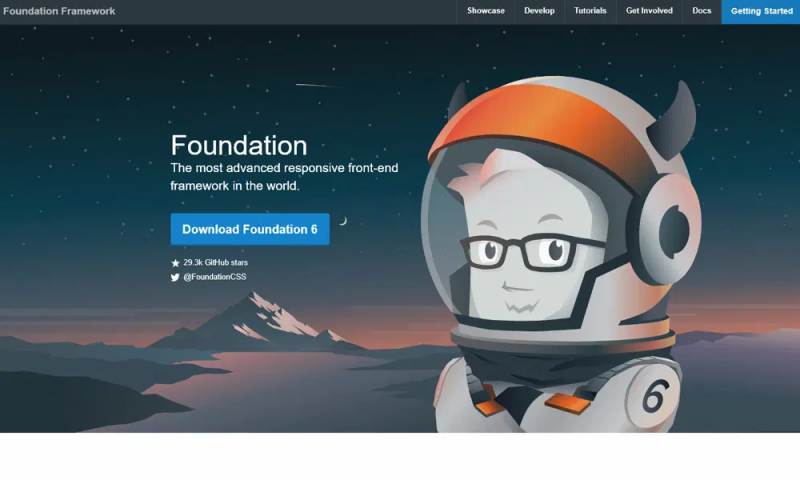
Materialize
Materialize is a responsive CSS framework based on Google’s Material Design principles. It’s a great Tailwind alternative for developers who want a visually consistent design system without starting from scratch. Materialize includes pre-styled components like cards, modals, and floating action buttons, making it ideal for rapid prototyping.
Unlike Tailwind’s utility-first approach, Materialize provides a more opinionated design language, which can save time for teams focused on aesthetics. It also includes JavaScript plugins for interactive elements like carousels and dropdowns. While it’s not as lightweight as Tailwind, Materialize is a solid choice for projects that prioritize Material Design and quick deployment.
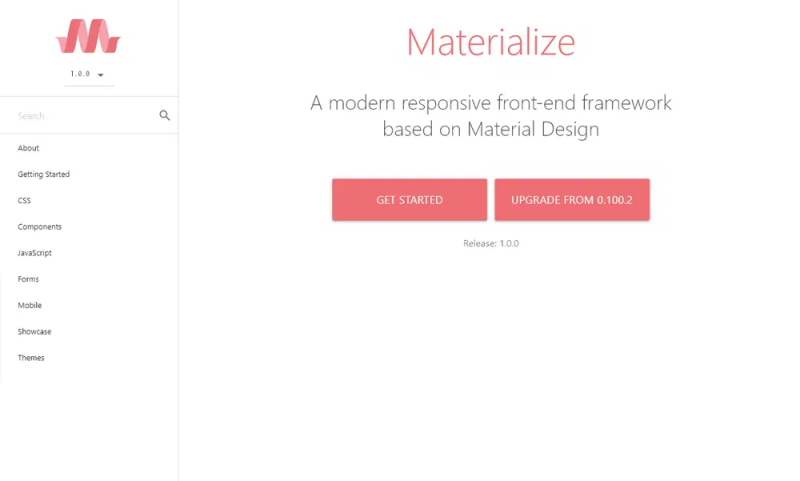
UI Kit
UI Kit is a lightweight and modular framework that offers a wide range of components and utilities. It’s a strong Tailwind CSS alternative for developers who need a balance between pre-built components and customization. UI Kit’s clean syntax and extensive documentation make it easy to learn and implement.
The framework includes features like flexbox-based grids, animations, and SVG icons, all of which are highly customizable. Unlike Tailwind, UI Kit provides a more structured approach to styling, which can be beneficial for teams working on larger projects. If you’re looking for a framework that combines flexibility with ready-to-use components, UI Kit is a great option.
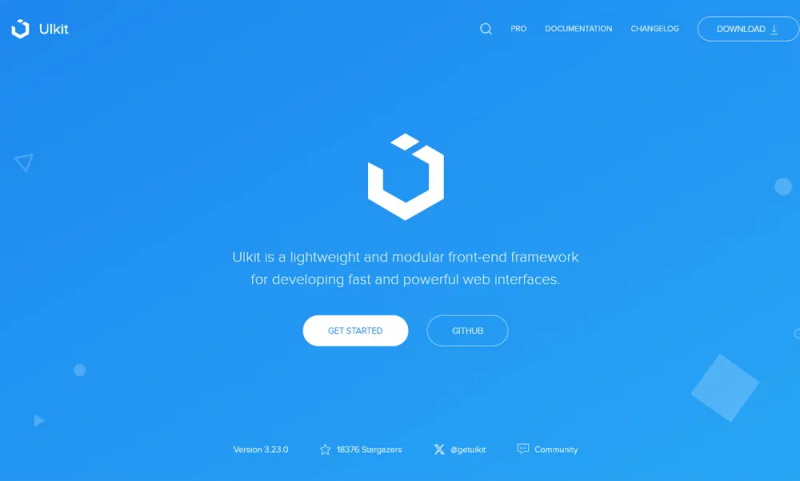
Pure CSS
Pure CSS is a minimalistic framework that focuses on simplicity and performance. It’s an excellent Tailwind alternative for developers who need a lightweight solution for small projects or prototypes. Pure CSS is modular, allowing you to include only the styles you need, which helps keep your CSS file size to a minimum.
Unlike Tailwind’s utility-first approach, Pure CSS uses a more traditional class-based system, making it easier for developers who prefer straightforward CSS. While it doesn’t offer as many pre-built components as Tailwind, its simplicity and performance make it a great choice for projects where speed and efficiency are critical.
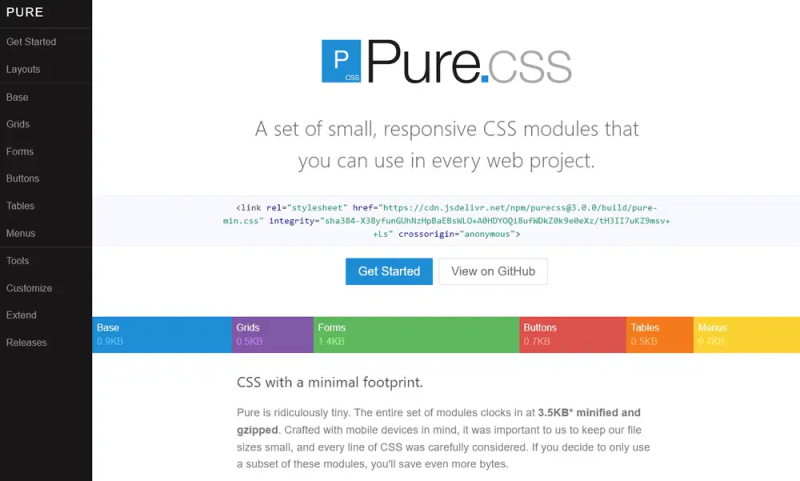
UnoCSS
UnoCSS is a modern, atomic CSS engine that takes the utility-first approach to the next level. It’s a strong Tailwind CSS alternative for developers who want even more flexibility and performance. UnoCSS generates only the CSS you use, resulting in extremely small file sizes and faster load times.
The framework is highly customizable, allowing you to define your own utility classes and design tokens. While it requires a bit more setup compared to Tailwind, the performance benefits and customization options make it a compelling choice for developers working on performance-critical applications.
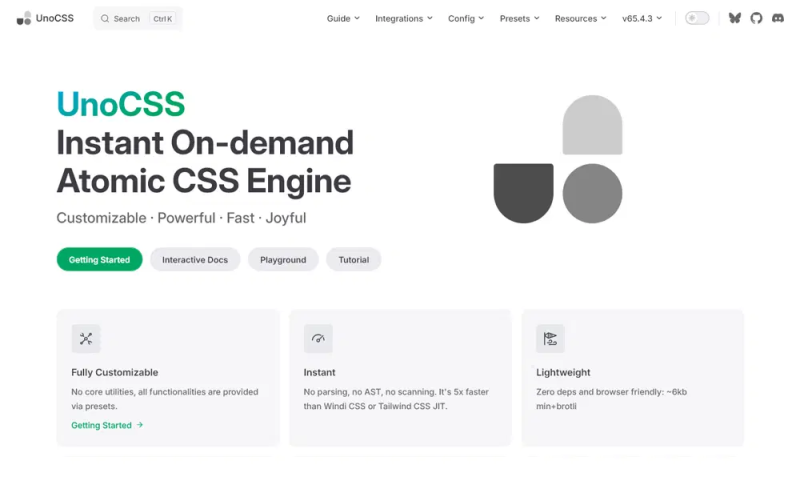
Tachyons
Tachyons is a functional CSS framework that emphasizes simplicity and reusability. It’s a great Tailwind alternative for developers who appreciate a utility-first approach but want something even more lightweight. Tachyons uses a small set of reusable classes, making it easy to build consistent and responsive designs.
Unlike Tailwind, Tachyons doesn’t require a build step, which can simplify your workflow. Its minimalist approach makes it ideal for small projects or teams that prefer writing less CSS. If you’re looking for a no-frills, utility-first framework, Tachyons is worth considering.
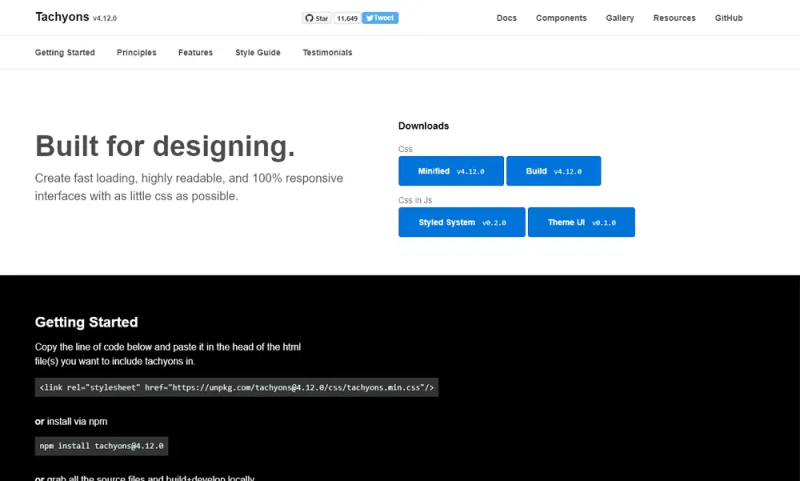
Skeleton
Skeleton is a simple, responsive CSS framework that provides a basic grid system and a few essential styles. It’s a great Tailwind CSS alternative for developers who need a lightweight starting point for small projects or prototypes. Skeleton’s minimalistic approach ensures that your project stays lean and fast.
Unlike Tailwind, Skeleton doesn’t include utility classes or pre-built components, making it more suitable for developers who prefer to write their own CSS. Its simplicity and ease of use make it a great choice for quick projects or when you need a barebones framework to build upon.
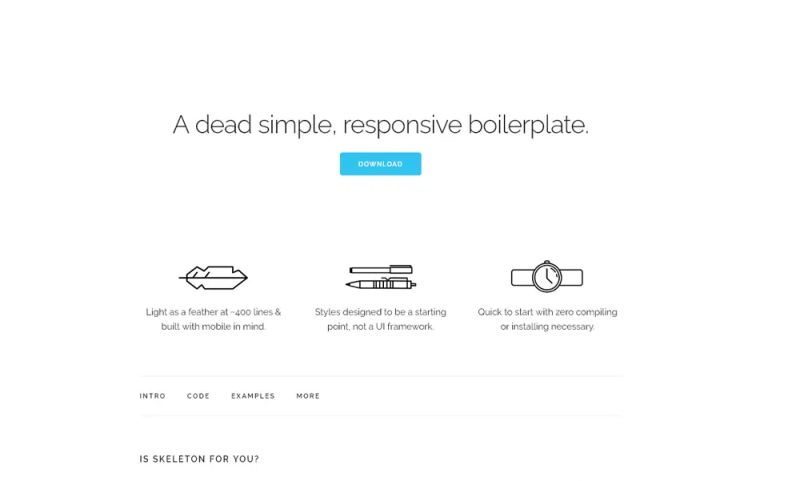
Spectre CSS
Spectre CSS is a lightweight, responsive CSS framework that offers a modern and clean design. It’s a strong Tailwind alternative for developers who want a balance between simplicity and functionality. Spectre CSS includes a variety of components and utilities, such as grids, buttons, and forms, all designed with a minimalistic aesthetic.
Unlike Tailwind’s utility-first approach, Spectre CSS provides a more traditional class-based system, making it easier for developers who prefer a structured approach to styling. Its lightweight nature and modern design make it a great choice for projects that need a clean and professional look without the complexity of larger frameworks.
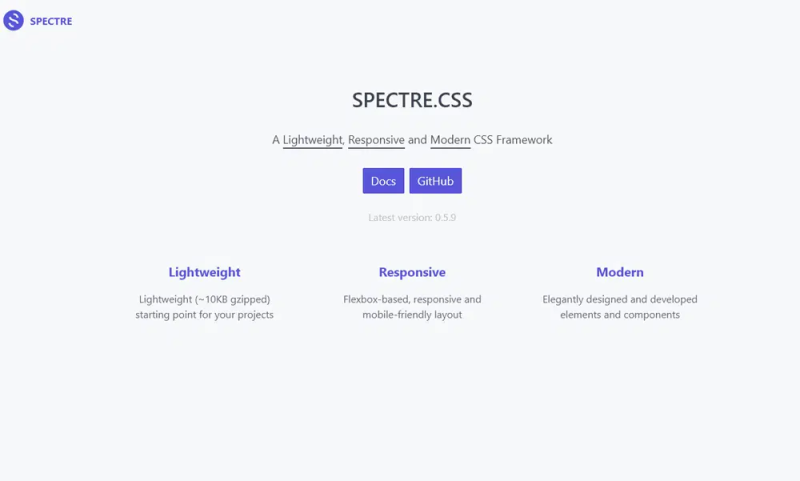
Cirrus UI
Cirrus UI is a modern, responsive CSS framework that combines simplicity with a sleek design. It’s a great Tailwind CSS alternative for developers who want a framework that’s easy to use but still offers a range of components and utilities. Cirrus UI includes features like a flexbox grid, buttons, forms, and more, all designed with a modern aesthetic.
Unlike Tailwind, Cirrus UI provides a more opinionated design system, which can save time for developers who want a polished look without extensive customization. Its clean and intuitive syntax makes it easy to learn and implement, making it a great choice for projects that need a modern and professional design.
